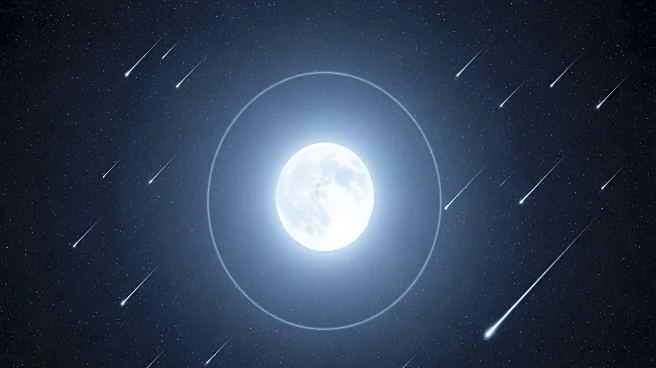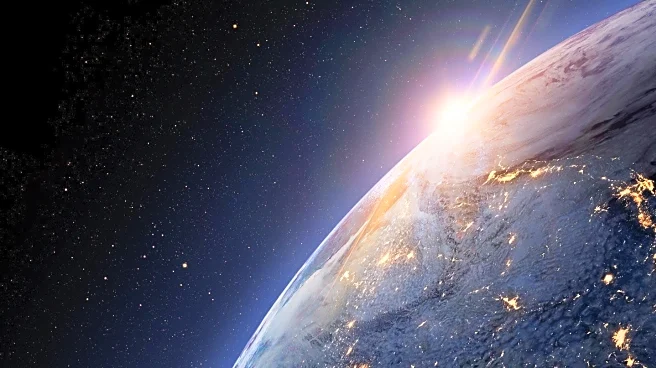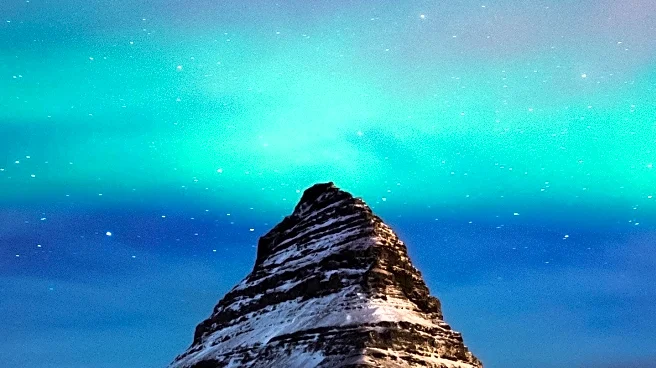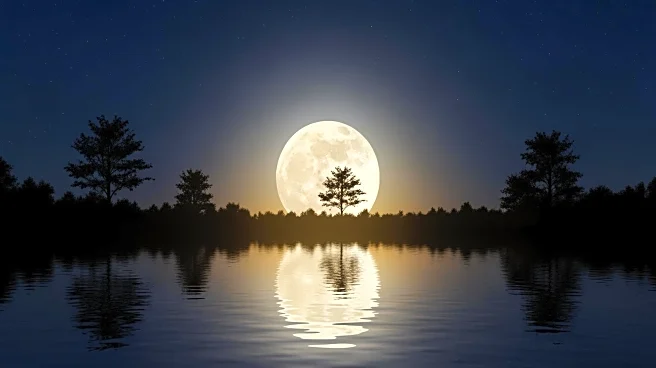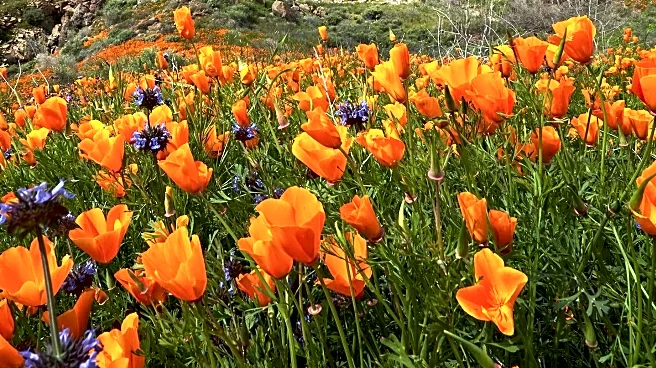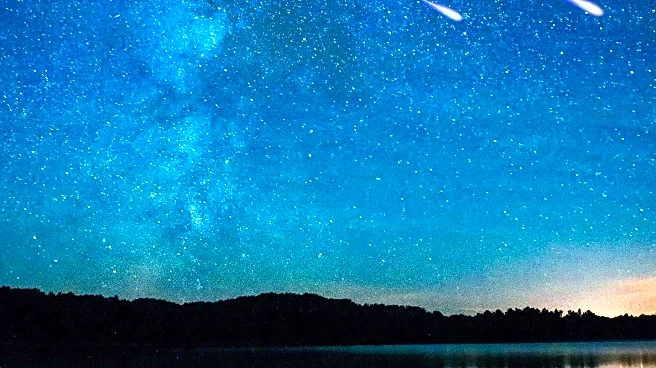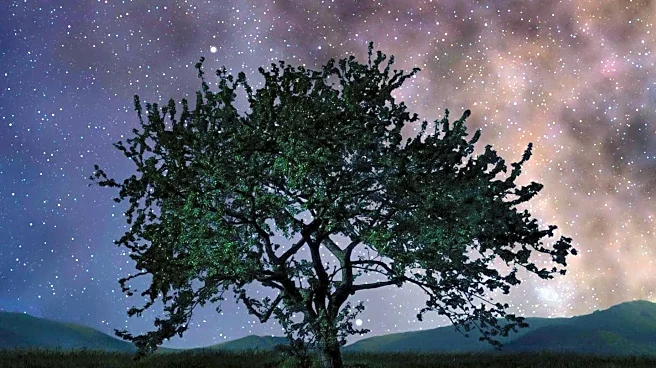What's Happening?
The largest supermoon of 2025 is set to rise tonight, offering a spectacular natural light show. This event coincides with the peak of the Southern Taurid meteor shower, known for its dramatic fireball
shooting stars. The November full moon, also referred to as the 'Beaver Moon' in North America, will reach its full phase at 8:19 a.m. EST on November 5, just hours before it reaches perigee, the closest point to Earth in its orbit. This supermoon will appear up to 14% larger and 30% brighter than a typical full moon. Observers can expect the moon to appear larger and adopt a yellow-orange hue when close to the horizon due to atmospheric scattering. A free livestream of the event is available through the Virtual Telescope Project, allowing viewers to enjoy the spectacle from home.
Why It's Important?
The occurrence of the largest supermoon of the year provides a unique opportunity for skywatchers and photographers to capture stunning images of the night sky. This event highlights the beauty and dynamics of celestial phenomena, encouraging public interest in astronomy and science. The supermoon, combined with the Southern Taurid meteor shower, offers a rare chance to witness two significant astronomical events simultaneously. Such events can inspire educational activities and discussions about space and the universe, fostering a greater appreciation for science and exploration.
What's Next?
Skywatchers can look forward to observing Saturn and Jupiter in conjunction with the supermoon. Saturn will be visible as a bright evening star to the right of the moon, while Jupiter will rise to the lower left of the moon later in the evening. The Southern Taurid meteor shower will continue to produce fireball shooting stars, originating from the constellation Taurus. Photographers and astronomy enthusiasts are encouraged to capture images of the supermoon and meteor shower, with guides available for lunar astrophotography and equipment recommendations.
Beyond the Headlines
The supermoon event underscores the importance of public engagement with astronomy and science. It serves as a reminder of the vastness and beauty of the universe, potentially inspiring future generations to pursue careers in science and technology. The event also highlights the role of technology in making astronomical phenomena accessible to a wider audience through livestreams and online resources.
